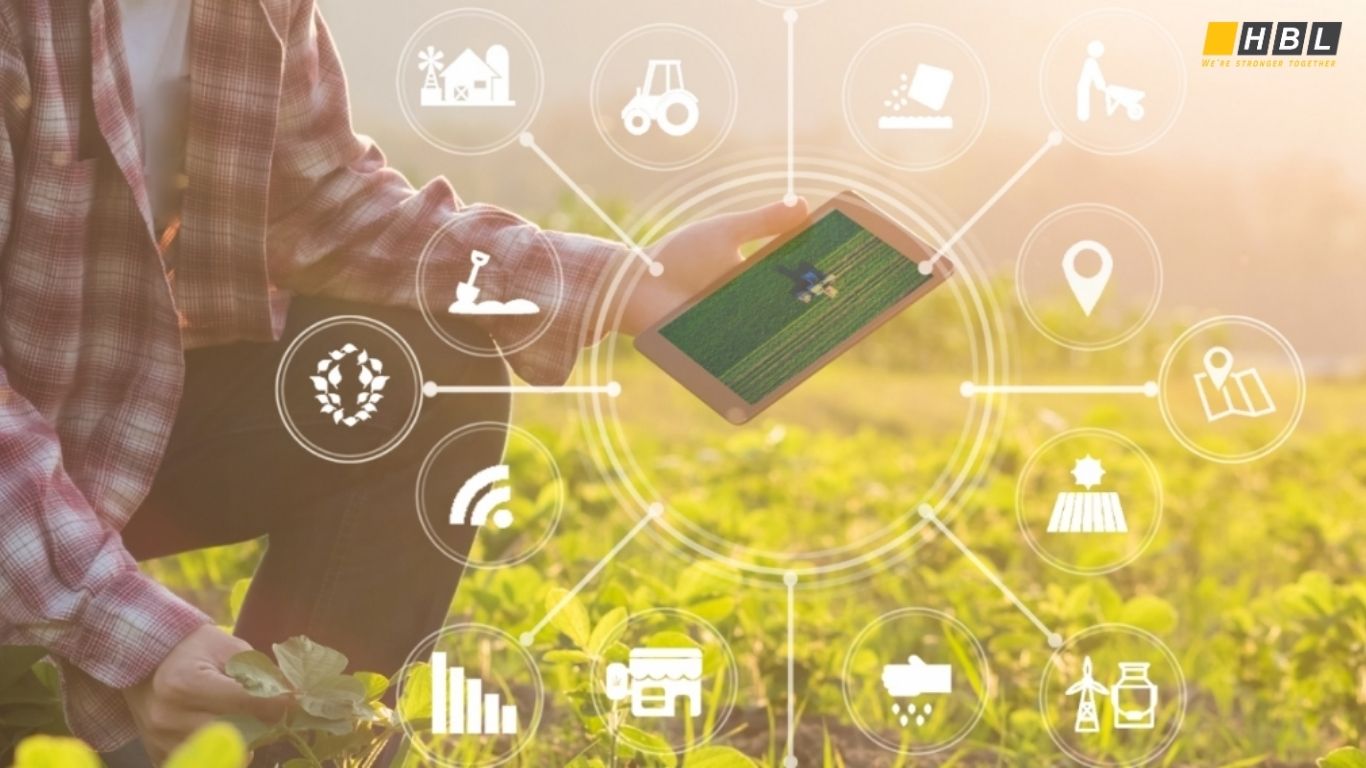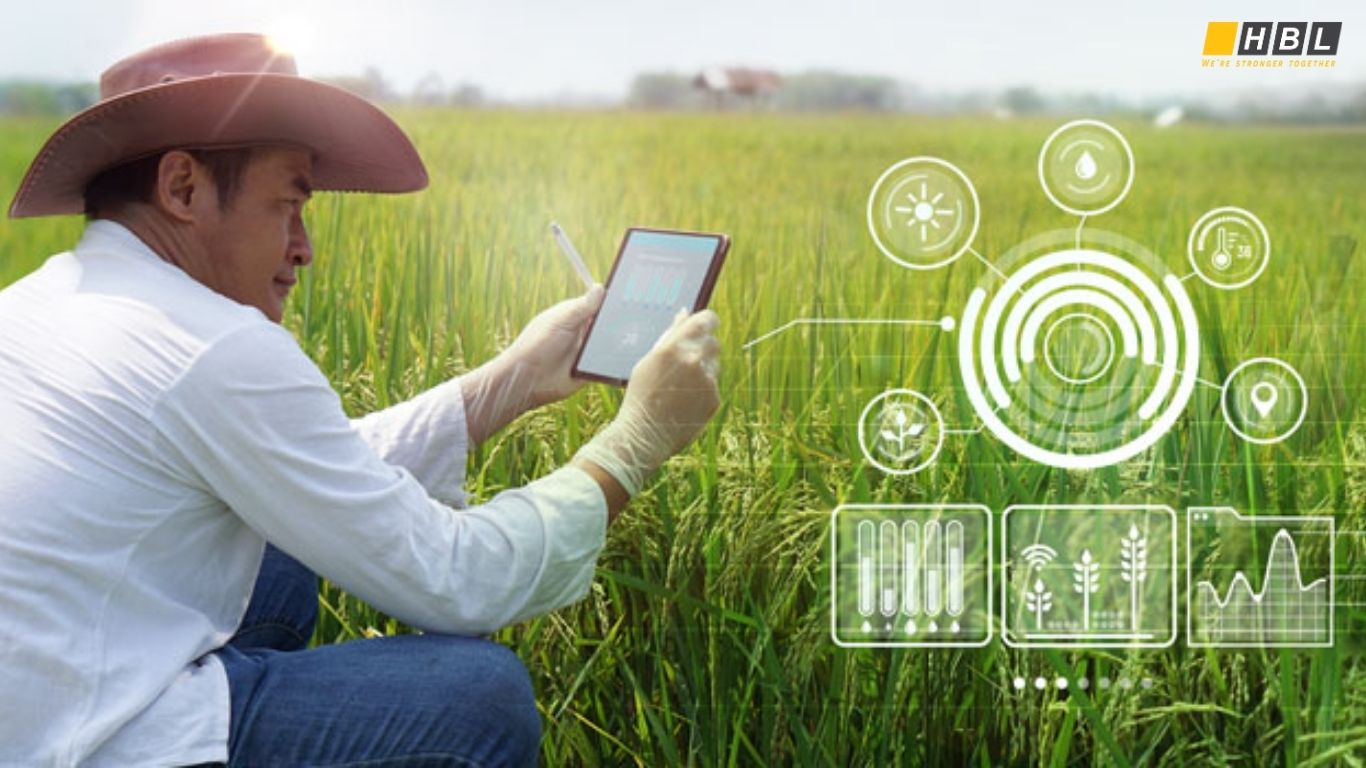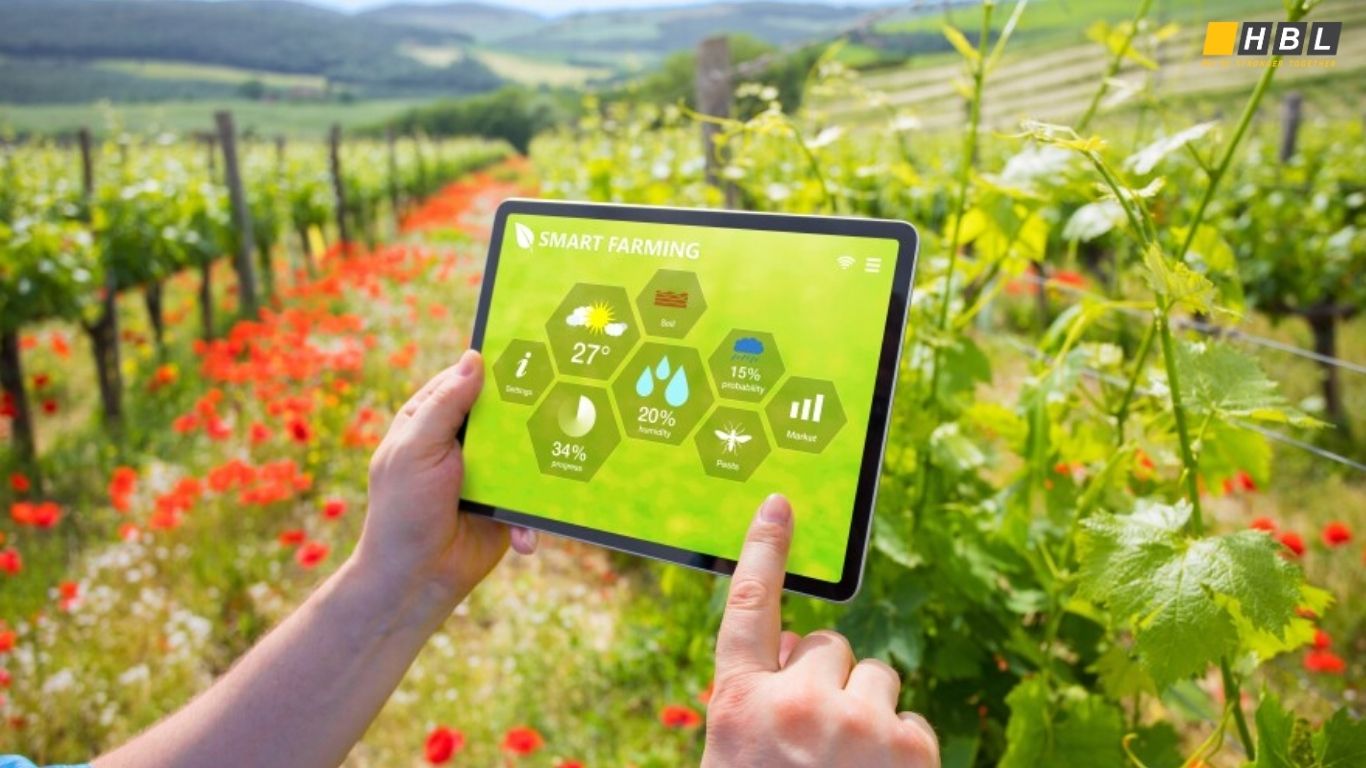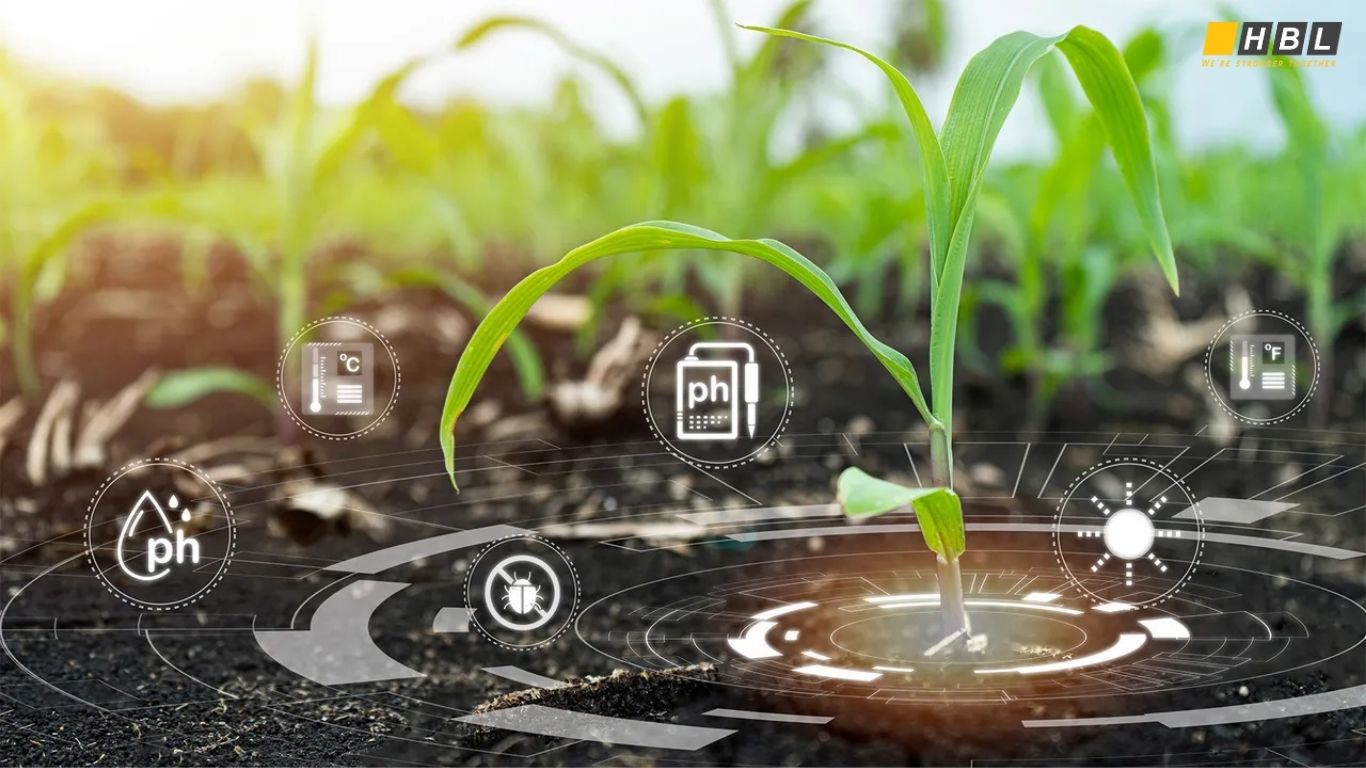In an era when feeding a growing global population, coping with climate change, and using resources more efficiently are critical, smart agriculture solutions are rapidly becoming a cornerstone of modern farming. These digital, connected, and data-driven technologies are enabling farmers to optimize inputs (water, fertilizer, labor), improve yields, reduce waste, and enhance sustainability.
In this article, we’ll explore the landscape of smart agriculture solutions, with a special emphasis on smart agriculture connectivity solutions, analyze the smart agriculture solution market, and show how a company like HBLAB can partner with farm enterprises, agritech firms, and governments to deliver high-impact solutions.
1. Smart Agriculture: Definitions & Scope
What are smart agriculture solutions?
Smart agriculture (sometimes called precision agriculture, digital agriculture, or connected farming) comprises the tools, platforms, systems, and services that enable more intelligent, data-driven management of farm operations. These may include sensors, drones, satellite imagery, decision support software, automated machinery, robotics, AI models, and connectivity layers.
Within that, smart agriculture connectivity solutions refer specifically to the communication networks and architectures that link IoT devices, sensors, gateways, drones, and systems — enabling real-time data flows, remote monitoring, control, and integration. Without robust connectivity, a “smart” solution cannot scale effectively.
The scope of a full smart agriculture stack typically includes:
- Hardware & Devices: sensors (soil moisture, pH, nutrients), actuators, automated systems, drones, robotic machinery
- Connectivity & Network: LPWAN (LoRaWAN, NB-IoT), 5G/4G, satellite, hybrid / multi-connectivity models
- Platform & Software: farm management systems (FMS), dashboards, analytics, AI/ML models
- Services & Integration: system integration, advisory, analytics as a service, remote support, maintenance
Because connectivity is often the bottleneck — especially in remote or rural farmland — a deep understanding of connectivity solutions is crucial for success.

2. Why Smart Agriculture Matters (Drivers & Challenges)
Key Drivers
- Rising global food demand & limited arable land
With population growth and increasing per capita consumption, yield gains must come from smarter use of existing land. - Resource constraints & sustainability
Water scarcity, soil degradation, energy conservation, and emissions reduction push farms to adopt more efficient methods. - Climate volatility & risk management
Smart systems help farmers respond proactively to droughts, floods, pests, or disease outbreaks using predictive analytics. - Labor shortages & farm mechanization
Many regions suffer from aging farming populations and labor scarcity. Automation and robotics help mitigate that. - Policy, subsidies and digital agriculture push
Many governments now support smart farming projects and incentives, especially in Asia and developed markets.
Key Challenges
- Connectivity & infrastructure gaps
Many rural areas lack reliable broadband or cellular coverage — a central barrier. - High upfront costs and ROI uncertainty
Farmers may hesitate due to uncertain payback or capital constraints. - Integration & interoperability
Different devices, vendors, and standards cause fragmentation. - Data security & privacy
Concerns about data use, ownership, and protection are real, especially for farm-level data. - Technical skills / adoption resistance
Some farmers resist new tech or lack familiarity/trust in digital systems.

To win in this space, a solution provider must address not just devices and analytics but also connectivity, adoption support, and integration.
3. Key Components of Smart Agriculture Solutions
To make the concept concrete, here’s a breakdown of essential components and examples:
a) Sensing & Data Collection
- Soil sensors (moisture, nutrients, temperature, pH)
- Environmental sensors (weather, humidity, wind)
- Crop health imaging (multispectral, hyperspectral, RGB) using drones or satellites
- Livestock sensors (health monitoring, GPS collars)
b) Connectivity & Telemetry
(This is the crux of smart agriculture connectivity solutions, explored more in next section)
c) Edge & Gateway Devices
Devices that collect, preprocess, compress, and forward data to the cloud or central system
They may perform local rules, filtering, or anomaly detection to reduce communication loads.
d) Cloud / Platform / Analytics
- Data lakes, databases, API layers
- Decision support systems, dashboards, alerts
- Machine learning / AI models (yield prediction, anomaly detection, prescriptive recommendations)
e) Control & Automation
- Irrigation controllers, valve actuation
- Drone dispatching, robotic systems, automated tractors
- Greenhouse climate control systems
f) Integration & Operations
- APIs to integrate with ERP, supply chain systems, marketplaces
- Role-based access, user management
- Maintenance, alerts, support services
A robust solution ties all these elements together seamlessly.
4. Smart Agriculture Connectivity Solutions: Networks & Architectures
Connectivity is a linchpin of any scalable smart agriculture deployment. Below is a deep dive into connectivity options, tradeoffs, and hybrid architectures.
4.1 Connectivity Technologies: Pros & Tradeoffs
| Technology | Coverage / Range | Bandwidth / Data Rate | Power Consumption | Cost | Suitability | Challenges / Notes |
| LoRa / LoRaWAN (LPWAN) | kilometers per gateway | Low (kbps) | Very low | Low | Sensor networks, sparse data | Limited payload, duty cycle constraints; good for rural settings. LoRa for agriculture is well studied. arXiv |
| NB-IoT / LTE-M (cellular LPWA) | wide (coverage where cellular exists) | Moderate | Low to moderate | Moderate | Remote sensors, moderate data | Works where cellular coverage exists; can be constrained in latency. |
| 5G / 4G LTE | wide, cell coverage | High (Mbps–Gbps) | Moderate to high | Higher | High-data devices (cameras, drones) | Rural coverage may be weak; costlier in rural contexts. |
| Satellite / NTN | global, remote | Variable | High | High | Very remote fields, fallback connectivity | Latency constraints, cost, data caps. |
| Hybrid / Multi-Connectivity | — | — | — | — | Combining above to get best of all | Helps satisfy availability, reliability in remote zones. |
Academic research shows hybrid LPWAN + 5G architectures can reduce connectivity costs by ~30% while improving reliability in agricultural contexts.
Additionally, multi-connectivity strategies combining terrestrial (5G) and satellite links help meet availability and latency requirements even in remote areas.

4.2 Connectivity Architecture Models
- Star topology: Sensors → gateway → cloud. Simple but limited range for sensors.
- Mesh networks: Sensors relay to each other → gateway. Useful in dense deployments.
- Clustered gateways: Multiple local gateways that aggregate sensors, then uplink to regional gateway.
- Mobile / Bring Your Own Network (BYON): Mobile, deployable connectivity that moves across farmland seasons. Useful where farm operations shift location.
- Overlay networks: Use one “robust” backbone (e.g. satellite) plus opportunistic links (LoRa, 5G) for data offloading.
4.3 Connectivity Best Practices & Tips
- Plan for coverage gaps — use redundancy and fallback links.
- Edge processing to reduce payload — filter or compress data locally.
- Prioritize traffic — urgent alerts vs periodic measurements.
- Security built-in from the start — encryption, authentication, network segmentation.
- Scalability & modular deployment — start small, expand later.
- Interoperability & standards — use open protocols (MQTT, LoRaWAN, etc.)
By designing the connectivity layer carefully, you ensure that downstream analytics, decision-making, and automation work reliably.
How to Plan & Deploy a Smart Agriculture Solution (Roadmap)
Here is a step-by-step guide to planning and deploying a smart agriculture project:
Step 1: Assess Needs & Goals
- Define core objectives (yield increase, water savings, pest control, labor reduction)
- Map farm geography, crop types, soil types, microclimates
- Survey existing infrastructure, connectivity, power availability
Step 2: Design Sensing & Connectivity
- Select sensors aligned with key use cases
- Choose connectivity architecture (LoRa, NB-IoT, 5G, satellite, hybrid)
- Deploy gateways, edge devices, plan coverage and fallback
Step 3: Platform & Analytics Selection
- Choose or build farm management system (FMS)
- Design data ingestion, API, dashboards, models
- Consider modular, microservices architecture for scalability
Step 4: Pilot & Validate
- Deploy a pilot zone (say 10–20% of farm)
- Collect data, validate connectivity, refine models
- Iterate on calibration, feedback loops
Step 5: Scale & Integrate
- Gradually expand sensor and device deployments
- Integrate with ERP, supply chain, marketplace platforms
- Add advanced features (automation, robotics, predictive alerts)
Step 6: Support, Maintenance & Training
- Provide onboarding and training for farmers & operators
- Monitor system health, connectivity, firmware updates
- Set up alerting, maintenance schedules, remote diagnostics
Step 7: Measure ROI & Optimize
- Measure KPIs (yield, resource savings, labor cost, ROI)
- Use analytics to continuously refine decisions
- Run A/B experiments (e.g. variable rate irrigation)
This roadmap aligns with buyer journeys and helps in content marketing and sales enablement.

Why HBLAB Is the Ideal Partner for Smart Agriculture Projects
Here’s where you seamlessly integrate a PR segment that aligns with the search intent and value proposition:
At HBLAB, we specialize in delivering end-to-end smart agriculture solutions, including connectivity layers, system integration, AI/analytics, and managed services. Here’s why we are a top choice for farm enterprises, agritech firms, and governments:
- Large, skilled team: Over 630 professionals with strong domain experience.
- Global presence: Headquarters in Vietnam, branches in Australia, Singapore, Japan, and Korea — enabling local support and market knowledge.
- English fluency: ~30% of our team are senior-level with excellent English communication skills, ideal for international projects.
- Tailored collaboration models: We support BOT, offshore, onsite, and dedicated-team engagements — matching your preferred project structure.
- Cost efficiency: Quality delivery at 30% lower cost compared with comparable providers in local markets.
- Technical breadth: Strong capabilities in embedded systems, connectivity (LoRa, NB-IoT, 5G, satellite), cloud, AI/ML, system integration.
- Security & reliability: Strict adherence to security standards, including CMMI Level 3 certification.
By partnering with HBLAB, organizations can accelerate their adoption of smart agriculture connectivity solutions and holistic smart agriculture solutions, with reduced risk, high technical quality, and cost-effective deployment.
Conclusion
Smart agriculture is not a fad — it is the future of farming and a necessity given resource constraints and climate uncertainties. The smart agriculture solution market is poised for strong growth, and the connectivity layer (often an overlooked piece) is rising rapidly in importance.
To win in this space, successful players must integrate hardware, robust connectivity, analytics, and service/maintenance support — while delivering clear ROI and managing adoption risks.
For farm enterprises or agritech firms seeking a trusted partner to design, implement, or operate smart agriculture systems, HBLAB offers proven technical depth, international reach, flexible engagement models, cost efficiency, and strong security practices.
FAQ (Frequently Asked Questions)
Q: What is the difference between “smart agriculture solutions” and “precision agriculture”?
A: Precision agriculture is a subset of smart agriculture — focusing on using data and technology (e.g. variable rate seeding/fertilizer) to optimize input use. Smart agriculture is broader and also encompasses connectivity, platforms, integration, automation, and decision systems.
Q: Which connectivity technology is best for farming in remote areas?
A: It depends on trade-offs. LoRa is cost-effective with long range but low data throughput; NB-IoT works where celluâlar exists; satellite or 5G fallback is valuable for reliability. A hybrid architecture often yields the best resilience.
Q: How long does it take to deploy a smart agriculture pilot?
A: A minimal pilot (sensors + connectivity + dashboard) can be deployed in 3–6 months, depending on scale, approvals, site complexity, and iteration cycles.
Q: What ROI can farmers expect?
A: Depending on crop type, region, and implementation quality, many deployments report 10–30% input savings (water, fertilizer) or 5–15% yield gains. For many farms, payback can be under 2–3 years if scaled well.
Q: How secure are smart agriculture systems?
A: Security depends on rigorous design: encrypted communications, authentication, segmentation, firmware updates, and governance policies. Working with a vendor that enforces security best practices is crucial.
Q: Can small farms adopt smart agriculture solutions?
A: Yes — with modular, low-cost sensor packs, connectivity (LoRa), and subscription models (SaaS), even small farms can pilot and scale gradually.
Read more:
– Offshore Development Center (ODC): Unlocking Global Talent for Tech Growth
– Transform Your Business with Low Code No Code Platforms
– Digital Workplace Transformation: The Definitive Future of Work

